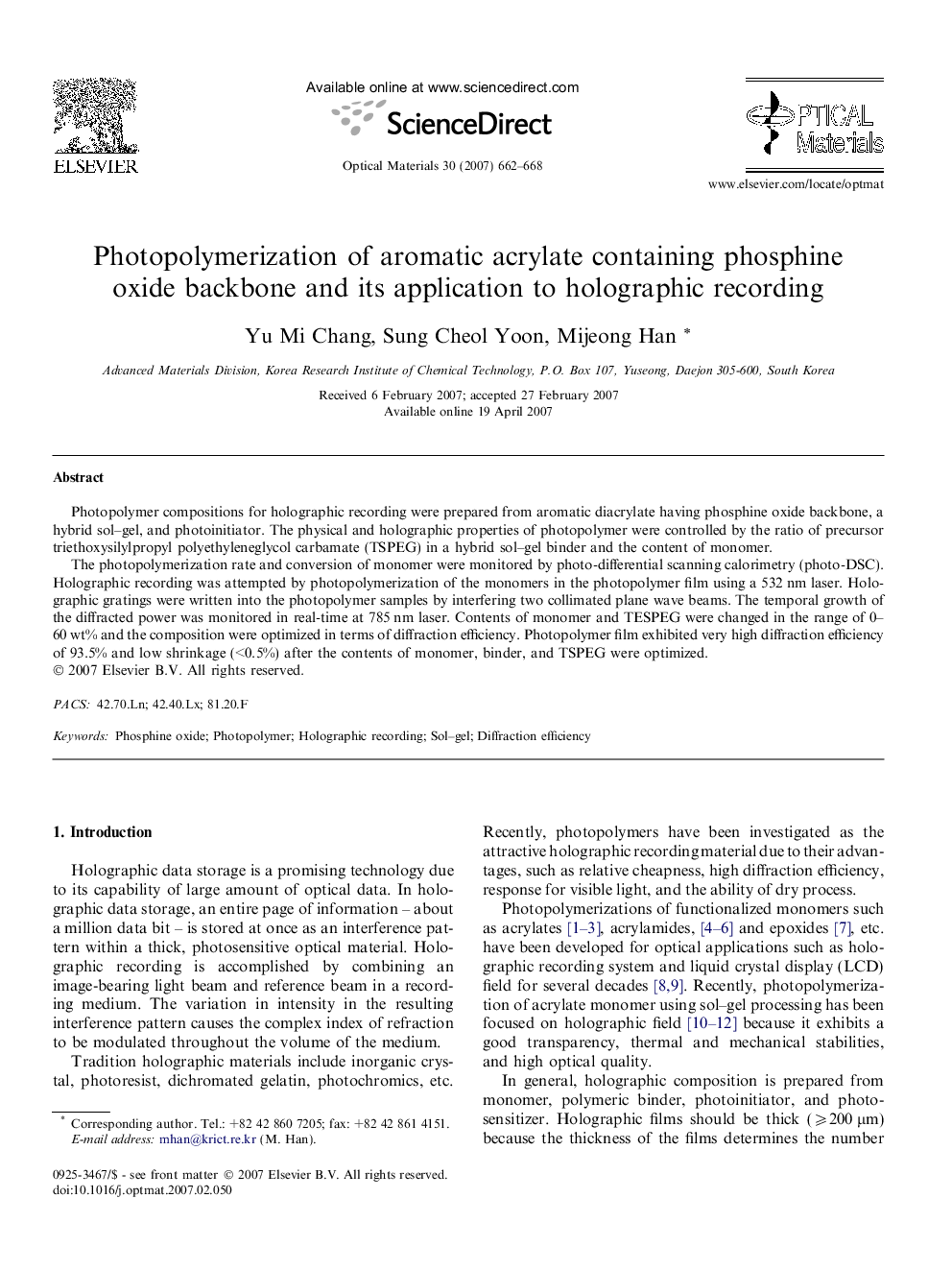| Article ID | Journal | Published Year | Pages | File Type |
|---|---|---|---|---|
| 1497410 | Optical Materials | 2007 | 7 Pages |
Photopolymer compositions for holographic recording were prepared from aromatic diacrylate having phosphine oxide backbone, a hybrid sol–gel, and photoinitiator. The physical and holographic properties of photopolymer were controlled by the ratio of precursor triethoxysilylpropyl polyethyleneglycol carbamate (TSPEG) in a hybrid sol–gel binder and the content of monomer.The photopolymerization rate and conversion of monomer were monitored by photo-differential scanning calorimetry (photo-DSC). Holographic recording was attempted by photopolymerization of the monomers in the photopolymer film using a 532 nm laser. Holographic gratings were written into the photopolymer samples by interfering two collimated plane wave beams. The temporal growth of the diffracted power was monitored in real-time at 785 nm laser. Contents of monomer and TESPEG were changed in the range of 0–60 wt% and the composition were optimized in terms of diffraction efficiency. Photopolymer film exhibited very high diffraction efficiency of 93.5% and low shrinkage (<0.5%) after the contents of monomer, binder, and TSPEG were optimized.
